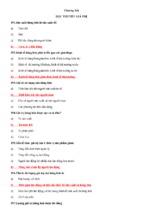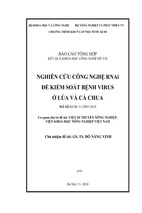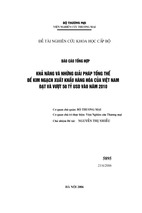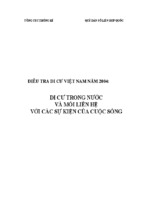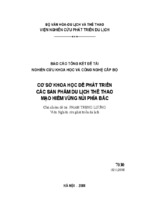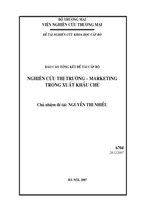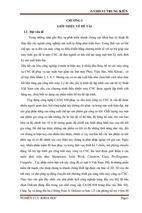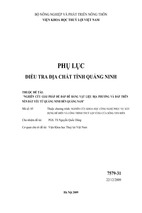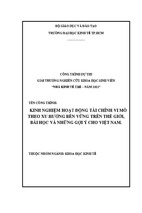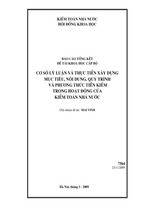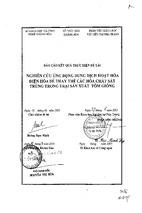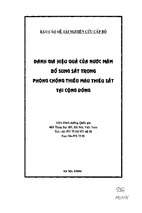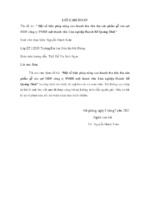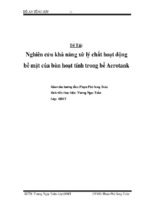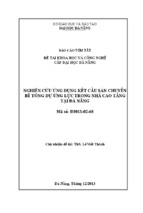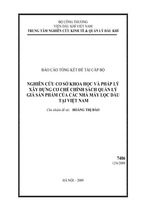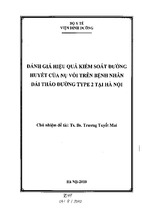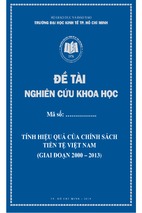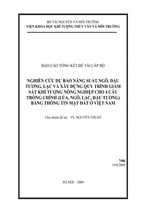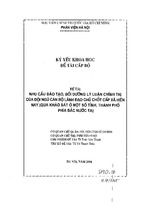INCLUSION IN ENGLISH LANGUAGE
TEACHER TRAINING AND EDUCATION
Anne Margaret Smith (BA, MA, PGCE)
Thesis submitted for the degree of Doctor of Philosophy.
Department of Educational Research
Department of Linguistics and English Language
Lancaster University
September 2006
i
INCLUSION IN ENGLISH LANGUAGE
TEACHER TRAINING AND EDUCATION
Abstract
This study synthesises the literature from three fields of education
(English language teaching (ELT), education and training for new teachers,
and education for disabled learners) to develop an understanding of how new
English language teachers are prepared for their responsibilities in an
inclusive classroom, and to recommend changes to the present system that
would further promote inclusiveness in ELT.
A broad survey of ELT professionals in the UK was carried out to
examine how initial training and professional development matched teachers’
requirements as they progressed through their careers. The branch of ELT
known as EFL (English as a Foreign Language) is generally perceived by its
practitioners to be student-centred and strongly inclusive in ethos, and so their
experiences of and attitudes towards learners with disabilities and learning
differences were also explored to determine what factors might affect the
teachers’ ability or willingness to include learners who had additional support
needs. This survey was supplemented by in-depth interviews with teacher
trainers and course designers.
The findings suggest that EFL teacher training does go some way
towards fostering inclusive beliefs and practices, but that because of the lack
of an explicit focus on disability issues, many teachers feel under-prepared
and lack confidence when asked to work with disabled learners. In the new
climate of governmental control of ELT in the UK, new initial qualifications are
ii
being developed to comply with state-sector regulations. This thesis
recommends that the opportunity is taken to fuse the inclusive features of the
intensive TEFL courses with the broader PGCE courses, to offer ELT
professionals the chance to gain a qualification that not only allows them to
work in both the private and the state sector but also prepares them
thoroughly for working in the inclusive language classroom.
iii
Acknowledgements
Many thanks are due to the following people:
Sauli, Ingvar and the other members of the Monday afternoon group,
who started me down this path;
Professor Colin Rogers and Doctor Florencia Franceschina who guided
the research;
My colleagues around the country who gave their time to participate in
this study;
Dr. Ann-Marie Houghton, Tania Horak and Joanne Stocking who kindly
read and commented on my work;
‘C31’ and other fellow students in the departments of Educational
Research and Linguistics who helped me along the way;
And especially to David, who provided huge amounts of emotional,
technical, financial, academic, logistic and domestic support throughout
the four years that I have been working on this project.
iv
Table of Contents
PAGE
SECTION
Abstract
ii
Acknowledgements
iv
Table of Contents
v
viii
Table of Figures
CHAPTER 1: INTRODUCTION TO THE THESIS
1
1.0 Introduction
1
1.1 Background to the Study
2
1.2 Research Questions
7
1.3 Parameters of the Study
9
1.4 Outline of the Thesis
16
CHAPTER 2: THE DEVELOPMENT AND STRUCTURE OF ENGLISH
18
LANGUAGE TEACHING (ELT) IN THE UK
2.0 Introduction to ELT in the UK
18
2.1 The Origins of ELT in the UK (circa 1550 – circa 1950)
20
2.2 ELT in Post-war Britain (1950 – 2000)
27
2.3 The 21
ST
Century
35
2.4 Conclusions : ELT in Transition
55
CHAPTER 3: TOWARDS INCLUSIVE EDUCATION
57
3.0 Introduction
57
3.1 Before Warnock
60
3.2 The Warnock Era’ (1978 onwards)
67
3.3 Discourses of Disability
80
3.4 Inclusion in ELT
88
3.5 Conclusions: Comparing ELT and ‘Special’ Education
94
v
CHAPTER 4 : METHODOLOGY
96
4.0 Introduction
96
4.1 The Research Questions
97
4.2 The Methodological Approach
99
4.3 The Design of the Study
103
4.4 Conclusions
116
CHAPTER 5 : THE PARTICIPANTS
118
5.0 Introduction
118
5.1 The Interviewees
118
5.2 The Questionnaire Respondents
125
5.3 Conclusions
139
CHAPTER 6: THE VIEWS OF ELT PROFESSIONALS REGARDING
141
STUDENTS WHO HAVE DISABILITIES OR LEARNING DIFFERENCES
6.0 Introduction
141
6.1 Attitudes Towards Language Learners with ‘Learning
142
Difficulties’ and Disabilities
6.2 Employment Sector: Private Versus State
145
6.3 The Development of ‘Expertise’
157
6.4 Experience of Working with Disabled Learners
160
6.5 Different ‘Learning Difficulties’ and Degree of ‘Need’.
166
6.6 Summary of Findings for Question 1
178
vi
CHAPTER 7: APPROACHES TO INCLUSION IN INITIAL ELT
181
TRAINING
7.0 Introduction
181
7.1 The Aims of the Initial Certificate Courses
181
7.2 Inclusive Aspects of the Courses
189
7.3 The Extent to which Courses are Successful in Fostering
194
Inclusive Practices
7.4 Summary of Findings for Question 2
CHAPTER 8: PROFESSIONAL DEVELOPMENT OPPORTUNITIES
AVAILABLE TO ELT PROFESSIONALS
8.0 Introduction
205
208
208
8.1 Opportunities for Continuous Professional Development
209
8.2 The Uptake of CPD
217
8.3 CPD Opportunities in Supporting Disabled Learners
223
8.4 ELT Practitioners’ Views of the CPD Opportunities They Would
225
Like or Need to Pursue
8.5 Summary of Findings for Question 3
228
CHAPTER 9: DISCUSSION
230
9.0 Introduction
230
9.1 Summary of Findings
231
9.2 Discussion and Recommendations
234
9.3 What Does this Study Contribute?
247
9.4 Future Research and Action to be Taken
249
9.5 Conclusions: Final Thoughts
252
References
255
APPENDIX A: Survey of English Language Teachers
274
APPENDIX B: Introductory letter attached to the questionnaire.
280
APPENDIX C: Interview Schedule for trainers and course leaders
281
APPENDIX D: Glossary of Terms
284
vii
List of Tables and Figures
TABLE OR FIGURE
Table 1/1: Participants in English language teaching and learning
PAGE
13
Situations (adapted from Woodward’s “Stack” (1991; p.5).
Table 5/1: Key characteristics of the interviewees.
120
Table 5/2: Profile of interview informants by gender and place of work.
121
Table 5/3: Number of years experience of teaching and training by
122
Sector.
Figure 5/3: Number of years experience of training by sector.
122
Table 5/4: Profile of respondents by gender and place of work.
126
Figure 5/4: Profile of respondents by gender and place of work.
126
Table 5/5: Number of years of teaching experience.
127
Figure 5/5: Distribution of number of years of teaching experience.
127
Table 5/6: Number of years of teaching experience, by sector.
128
Figure 5/6: Distribution of number of years of teaching experience,
128
by sector.
Table 5/7: Respondents who have worked abroad, by current place of
129
work.
Figure 5/7: Percentage of respondents who had worked abroad,
129
by current place of work.
Table 5/8: Countries most commonly cited by respondents as places
131
of work.
Table 5/9: Types of English taught.
131
Table 5/10: Roles of the respondents, by current workplace.
132
Figure 5/11: Criteria for determining expertise status.
133
Table 5/11: Expertise status of respondents.
134
Table 5/12: Expertise status of respondents by sector.
134
Table 5/13: Number of students in the largest class.
135
Figures 5/13a and b: Number of students in largest classes in state
136
and private sector institutions.
Table 5/14: Respondents working full- or part-time, by place of work.
136
Figure 5/14: Percentage of respondents working full- or part-time,
137
by sector.
viii
Table 5/15: Places of additional work, by sector and working patterns.
138
Figures 5/15a and 5/15b: Places of additional work, by type of
139
Respondents’ main place of work.
Table 6/1: Respondents’ reactions to the 12 statements in section E.
143
Figure 6/1: Responses of the whole sample to the section E
144
Statements, arranged by strength of overall agreement.
Table 6/2: Differences in responses between private and state sector
155
Respondents.
Table 6/3: Responses to section E statements by expertise status.
158
Table 6/4: Numbers of students with each type of disability taught by
162
the respondents, divided by sector.
Table 6/5: Responses to section E statements, by specific experience.
164
Table 6/6: Comments provided in section D by type of disability.
167
Table 6/7: Potential participation in class (as estimated by all
173
respondents).
Figure 6/7: Potential participation in class (as estimated by all
174
respondents) arranged by degree of participation.
Table 6/8: Respondents’ judgements of potential participation, divided
176
according to prior experience.
Table 7/1: Reactions to section B statements; all respondents.
195
Figure 7/1: Reactions to section B statements; all respondents.
195
Table 7/2: First Qualification in Teaching or Education.
197
Table 7/3: Reactions of respondents whose first qualification was a
198
TEFL certificate to statements in B3.
Figure 7/3: Reactions of the respondents whose first qualification was
198
a TEFL certificate to the statements in B3.
Table 7/4: Comparison of reactions to the statements between those
199
respondents who had taken a Certificate in TEFL as a first
qualification, and those who had not.
Table 7/5: Decade in which first qualification was gained.
202
Table 7/6: Percentage of respondents who had worked before gaining
203
their first teaching qualification.
ix
Table 7/7: Comparison of responses to section B statements from
204
those who had worked before qualifying to those who had
not.
Table 8/1: Respondents who reported having had professional
210
experience of the given areas of teaching, as a whole sample
and by sector.
Table 8/2: Comparison of figures from section A and section C.
211
Table 8/3: Opportunities for Professional Development in the given
212
topics.
Figure 8/4: Proportion of respondents with management experience
214
who had had training in this area.
Figure 8/5: Proportion of respondents with experience of training new
215
teachers who had had training in this area.
Table 8/6: Proportion of respondents who had experience of different
216
aspects of teaching, with or without training.
Table 8/7: Qualifications gained since the Initial Certificate (n=135).
219
Table 8/8: Topics that training had been received in.
220
Table 8/9: Opportunities to access training in supporting learners.
223
Table 8/10: Topics in which respondents desired training.
227
Table 8/11: Results of section C, question C for the whole sample.
229
x
CHAPTER 1: INTRODUCTION TO THE THESIS
1.0 INTRODUCTION
This study was born out of a unique set of events in my professional life and
was designed to answer specific questions that arose from my experiences as
both a teacher of English as a foreign language (EFL) and an academic support
tutor. These two areas of education share many common features, which
distinguish them from the compulsory education system, often referred to as the
‘mainstream’. They both have much to contribute to debates about pedagogical
excellence, as well much to learn from each other (Ganschow & Sparks, 2000;
Norwich & Lewis, 2001) and this study is my attempt to bring the two closer
together, with a long-term view of combining what I see as the best aspects of
both. Although some research has been done in America which considers the
impact of disabilities and learning differences on foreign language learning
(notably by Leonore Ganschow, Richard Sparks and their colleagues (ibid)), very
little has been done in this country, almost nothing specifically on English
language learning and nothing at all that focuses on how teachers of English
approach the issue of including disabled learners in their classes. In this respect,
this study is unique and has an important contribution to make to ELT
professionals’ understanding of the inclusion debate in this country, and the role
we can play in it.
Although stemming from a personal quest which could have arisen at any
point, the timeliness of this investigation on a national and international scale is
worth noting. During the four years that the project has been underway, several
momentous changes have occurred in British ELT circles, including the
introduction of a new national curriculum (DfES, 2003) new qualifications for
1
teachers and learners and Skills for Life projects that have investigated disability
amongst ESOL learners (DfES, 2006a). Not only is English language teaching in
Britain in a state of reform and transition, but inclusive education and disability
issues are very much on the agenda in Britain, across Europe and for international
organisations, such as UNESCO (Potts, 2000). Indeed, inclusion has been
described by one proponent as being “the major issue facing education systems
throughout the world” (Ainscow, 2003; p.15). In this first chapter I intend to present
the circumstances in which my questions emerged, in order to explain the
motivation for and the aims of the research. I will give a preliminary sketch of the
context of the study and introduce some of the key concepts that are central to it.
Finally I will provide a ‘route-map’ that indicates the structure of the rest of this
thesis.
1.1 BACKGROUND TO THE STUDY
1.1.1 My background
I spent the first five years of my professional life teaching EFL in various
educational settings, both in the private sector and in state funded colleges in the
UK and abroad. I taught learners of all proficiency levels and ages, who had many
different reasons for learning English. At the start of my career I felt that my
degree in Linguistics and the initial certificate in Teaching English as a Foreign
Language to Adults (‘Cert. TEFLA’, usually known generically as ‘a TEFL
certificate’), that I had gained through a short intensive course immediately after
graduating had given me a firm foundation in my chosen field, and the experience
that I gained in the classroom added to my confidence.
In my third overseas post, in Sweden, the college I worked for had been
awarded the contract for an extensive programme of language courses in a
2
company where English had become the official language, following a take-over
by an American firm. All employees, from the board room to the factory floor, were
encouraged to access this language provision. As the new teacher, I was
assigned a group of assembly-line workers who had been learning together for a
short while already. My experience of working with these men every Monday
afternoon for two years led me to question whether I was as well prepared for the
career I had embarked upon as I had believed.
The members of the group were all well-motivated, met every week having
completed their homework, and really seemed to enjoy their English lessons. After
a year they had almost completed the elementary text book they were diligently
working through, and were excited, although a little daunted by the prospect of
embarking on the next level the following term. What made this group particularly
challenging for me was that they each had an impairment that made me
reappraise the ways of teaching that I, as a novice teacher, was developing. One
learner had restricted mobility which meant that certain activities in the cramped
classroom were problematic; another member of the group had a hearing
impairment. Another was orally communicative and competent, but his written
work did not reflect his ability (in a way that is often considered to be indicative of
a specific learning difference such as dyslexia). Two of the class members were
newly arrived from Eastern Europe, and one from Iran, and although they seemed
to welcome the chance to speak English (with which they were more familiar than
Swedish) one in particular seemed quite withdrawn at times, and another often
had to miss class or leave early to attend to family matters. The two other
members of the group appeared to experience significant barriers to learning: their
awareness and command of their own language led me to believe that learning a
3
foreign language represented an even greater challenge for them than for the
others. We worked steadily and incorporated a lot of extra practice activities into
the course as laid out by our textbook, but progress was slow and hard won. By
the end of the second year I was beginning to realise how woefully ignorant I was
of strategies for helping students to overcome barriers to learning, and that my
initial training had been quite inadequate in this respect.
I returned to the UK and studied for a Master’s degree in English Language
Teaching and Language Studies, simultaneously training as a Literacy and
Numeracy tutor for adults at the local college, before finding a post in the
academic support department of an FE college. In the three years that I spent
there I learnt British Sign Language, to enable me to work more effectively with
the college’s hearing impaired learners, and became involved socially with the
local Deaf community. I also studied to gain a better understanding of how specific
learning differences can affect students, and gained the obligatory PGCE for
teachers in the FE sector. This course focussed quite heavily on general issues of
‘equal opportunities’, but did not contain any compulsory modules related to
disability issues, so I supplemented it with an Open University module, ‘Learning
For All’.
During these years in FE I began to feel (as I still do) that EFL teaching
techniques and approaches have a lot to offer teachers in other fields of
education. I was also puzzled by the constant discussion about the necessity of
‘including’ students who have different (dis)abilities, and the insistence of the
college management that all staff attend innumerable training sessions and
seminars to discuss this topic, which to me (looking through TEFL-tinted
spectacles) seemed a self-evident requirement of teaching any class. Clough &
4
Nutbrown suggest that when the familiar is seen “with new and different lenses”
(2002; p45) it begins to seem strange, and these opportunities for “radical looking”
(ibid.), lie at the heart of many social research projects. Several questions arose
for me from this experience, such as whether talking about inclusion would lead to
students actually being fully included in their classes, and, if so, how?
The question that most intrigued me, however, was why EFL practitioners
do not talk about the inclusion of disabled students, and yet somehow expect it to
happen. My experience of having to find ways of making my teaching accessible
to students in my classes who did seem to experience difficulty in learning, made
me wonder why this issue had never arisen during my initial EFL training. From
this question came others which eventually became the research questions that
underpin this study; they are listed in section 1.2 of this chapter.
1.1.2 Motivation and aims
The main reason that this study was initiated, therefore, was to satisfy my
personal curiosity about the differences I had uncovered between EFL teachers,
academic support teachers and teachers in other fields of education (such as
vocational and academic subject teachers and teacher trainers in the FE sector). I
felt that it was important for me to understand why I (and my EFL colleagues)
seemed to take for granted certain aspects of teaching that for others warranted
many hours of discussion, debate and deliberation among professionals.
I wanted to find out whether it was simply that in EFL there was little
chance of teachers encountering disabled learners, or whether EFL teachers
simply did not consider the issue of inclusion important enough to discuss, or
whether there was another explanation entirely for the apparent lack of input about
inclusion on the initial certificate course. The first of these three hypotheses
5
seemed unlikely in the light of my own experience, and in view of the fact that
many EFL teachers are working in the compulsory sectors of education systems in
other countries, where the population was likely to be very similar to Britain in
terms of diversity of ability. The positive relationships that I had observed in EFL
classrooms and staff-rooms both in the UK and abroad were such that I found it
hard to believe that most practitioners did not have their students’ interests at
heart, so the second of these possibilities seemed unlikely. This left only the third
option, and I began to formulate the hypothesis that lies at the heart of this study,
namely that EFL teaching practices are inherently inclusive, but that this culture is
not transmitted overtly through the use of discourses of disability issues or ‘special
educational needs’, which are notably absent from the professional discourse of
the EFL community.
My aim was to discover whether or not my hypothesis was correct, and if it
did seem to be correct, to find out how this ethos had originated, and how it was
perpetuated. It seemed likely that somehow during their initial training, or
professional development, EFL teachers were inducted into that inclusive culture,
and I determined, if this were the case, to identify the features of the initial
certificate courses that contributed to the inclusive approach that seems to
characterise EFL teaching. I also wanted to examine what opportunities were
available for English Language Teaching (ELT) professionals if or when they
realised, as I had done, that their preparation for working in a really inclusive
classroom had been inadequate and they wanted to pursue further study or
training.
The focus of the study is therefore on the courses leading to Certificates in
TEFL, like the one I had taken, but some attention is also paid to other related
6
courses in order to find out what other professional bodies do, where ideas come
from and how EFL practices compare. This became particularly important when
the present government’s intervention in the branch of ELT known as English for
Speakers of Other Languages (ESOL) led to the introduction of courses for
English language teachers intending to work in the state sector, and its rejection of
the certificates and diplomas it dubs ‘legacy’ qualifications, that most English
teachers currently hold. These distinctions will be clarified below in section 1.3 of
this chapter, and discussed in more detail in Chapter 2. At this point, though, it
would be appropriate to present the questions that underpin the study.
1.2 RESEARCH QUESTIONS
The three main research questions that were formulated to provide a
structure for the research are listed here (their ordering does not denote relative
importance):
1) What views do British ELT practitioners (teachers, trainers, course leaders and
accrediting bodies) hold about the teaching of students who have disabilities or
learning differences?
2) How does initial TEFL training in the UK (the Certificate courses) approach the
issue of ‘inclusion’?
3) Does existing provision of in-service training and professional development
meet the needs of ELT practitioners in the UK?
As the thesis develops, these questions will, naturally, be refined and
subdivided. It should be noted that in the questions references are made to ‘ELT
practitioners’ which includes teachers involved in all forms of English language
education aimed at learners who have a different first language (EFL, ESOL and
7
other specific types of English courses described below), although the training is
referred to as ‘TEFL training’. This is because the initial TEFL certificate courses
offer generic introductions to the field of ELT, after which teachers choose (or are
steered into) one or more of the main branches of ELT. Teachers in state-funded
ESOL classrooms are (until now) quite as likely as those in the private EFL
schools to have come into the profession through a TEFL course. It is these
certificate courses that I am particularly interested in, and so all are included in the
study.
There is also one reference to ‘disabilities and learning differences’ and one
to ‘inclusion’ and it is important here to clarify how these two concepts are related
in the study. Inclusive education is not only about accommodating students who
have disabilities or experience difficulties in learning, although it seems that in
some contexts the two have become conflated. Booth, Nes and StrØmstad define
inclusion as being
“about reducing barriers to learning and participation
for all learners. It is about reducing discrimination on the
basis of gender, class, disability, sexual orientation,
ethnicity and family background” (2003; p. 1-2).
In EFL, where the inherent diversity of many of these learner characteristics (as
well as language background, nationality, religion, educational background and
attainment, and motivation for learning) is expected and often utilised as a
pedagogical tool in the classroom, disability is the last issue that needs to be
addressed in the pursuit of creating a truly inclusive sector. This study therefore
focuses on how English language teachers are prepared to work with students
8
who have disabilities or experience difficulties in learning, as a means to achieving
full inclusion in ELT.
1.3 PARAMETERS OF THE STUDY
In a research project of this modest scale it is important to define the
boundaries clearly from the outset. This study is concerned with the initial training
and education of British teachers of English whose learners are adults, have a
different first language, and who are learning in the UK. It particularly focuses on
the TEFL certificate courses, but also considers other routes into ELT. It is not
concerned with the teaching of other modern foreign languages (MFL), ELT in
other countries, or English to young learners or those for whom it is a first
language, except where it is useful to compare practice or trace the origins of
ideas. This research examines how well the certificate courses prepare new
teachers to work with disabled learners, but it does not set out to recommend
suitable strategies for the language classroom; it does not in that sense have a
pedagogical function.
In this section the main areas of interest are described and the key
concepts identified. There are inevitably many acronyms commonly used in these
fields of education, and these are explained in full here. Throughout the thesis,
these abbreviations are used, but a full glossary is provided in Appendix D, which
the reader may find useful for reference.
1.3.1 The English language
The English language is arguably one of the greatest economic assets
available to Britain. The British Council (the national body responsible for
overseeing many aspects of British cultural life, which plays a significant role in
9
promoting English language learning around the world) estimates that more than
700,000 people visit the UK each year in order to learn English (British Council,
2006), which has an enormous impact on the economy. In 1998 it was estimated
that these language learners spent between £700 million and £1 billion during
their time in Britain (DfEE, 1998). Conversely, it has been estimated that at least 1
million people living in the UK “lack the English language skills required to function
in society and employment” (Schellekens, 2001) the implication being that they
are thereby increasing dependency on the state and draining the national
resources.
The 20th century saw English expand as a global language on an
unprecedented scale, helped no doubt by the expansion of electronic
communication systems developed in English speaking countries. English is
spoken as a first language only by approximately 375 million people, far fewer
than the 867 million who have Mandarin Chinese as a first language (Gordon,
2005). However, about three times as many speak English as an additional
language, and it has official or special status in at least 75 countries, making it the
most widely used language on the planet (British Council, 2006).
The English language is accordingly taught in many diverse situations
around the world, as part of compulsory education systems, in private schools
catering for all ages, and in informal settings. One often-used classification of ELT
situations is Holliday’s BANA/TESEP dichotomy (Holliday, 1994), which draws a
useful distinction between countries where English is used as a first language (L1)
and taught extensively as a second or foreign language, Britain, Australasia and
North America, and those where it is taught as a foreign language in Tertiary,
Secondary and Primary school systems. Although the model has limitations, not
10
- Xem thêm -

